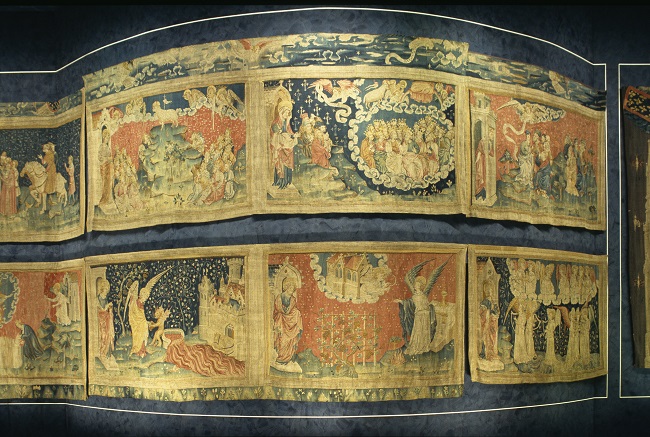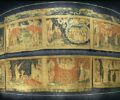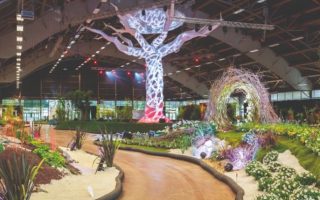French Monument of the Month: the Château d’Angers
Sponsored
In this monthly series, we take a look around France’s many beautiful historical buildings under the care of the Centre des Monuments Nationaux. This month, Angers’ castle, in the Loire Valley, whose walls now hold a UNESCO-listed tapestry since May 2023.
An unmissable site in the capital of the Anjou region in western France, the Château d’Angers stands as a keeper of time as 6,000 years of history unfolded in its grounds and within its thick walls. The many towers, built with grey and white stones and slotted into the ramparts, give it a striking look in the heart of the city which was built around it over centuries of different occupations.

The Château d’Angers, as seen from the opposite bank of the river Maine © Jean-Pierre Delagarde / Centre des monuments nationaux
Ancient beginnings
Located on a hill overlooking the river Maine, the site of the castle held a strategic interest long before the Middle Ages. While the oldest constructions date back to prehistoric times, the site was favoured by the Gauls and then the Romans for its elevated defensive position. For some time, the ancient city stood entirely on the hill.
The castle first appeared in the 9th century to fight the Viking invasion. The construction was ordered in 851 by Charles the Bald who placed a count there to lead the defence. The successive counts of Anjou founded powerful dynasties whose influence spread way beyond the Anjou territory, including the Plantagenets who fathered kings of England. Their kingdom stretched from Scotland to the Pyrenees and vestiges of the count’s palace are visible today in the castle.
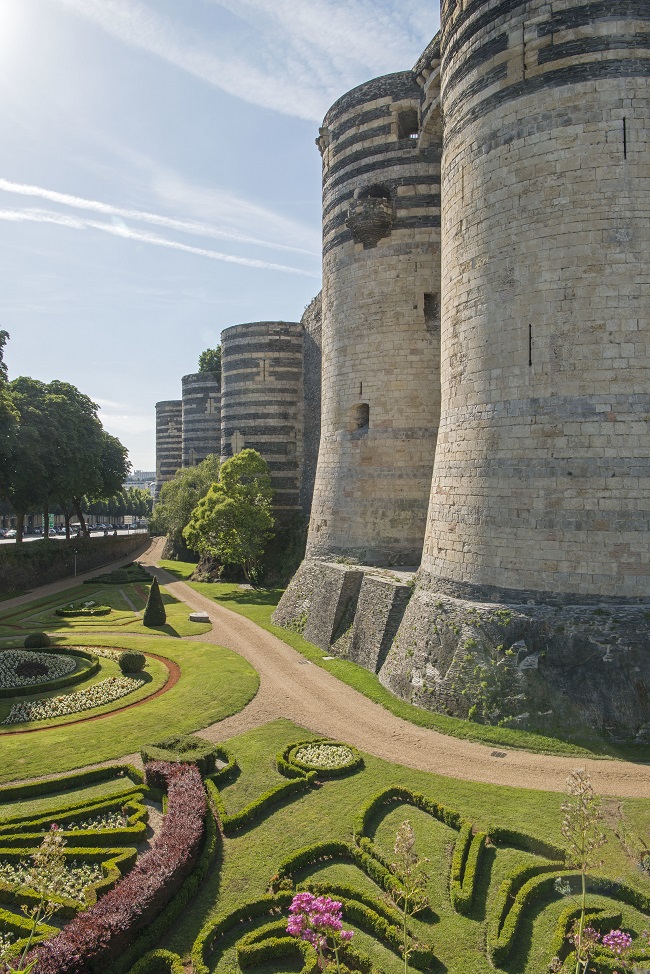
The beautiful gardens at the foot of the fortified walls © Jean-Pierre Delagarde / Centre des monuments nationaux
On the border of the French kingdom
In 1206, Angers was recovered by the French and the castle was transformed into a veritable fortress to protect this now-border city. Ordered in 1730 by Queen Blanche of Castile, the construction required a whole district of the city to be demolished and, in its place, 17 towers, deep ditches and other defensive elements rose from the ground.
In the 14th and 15th century, the castle played host to princes of the French royal family: the dukes of Anjou. While their political influence was not so impressive (they failed to control the lands of Sicily, Naples and Jerusalem), their artistic legacy is much more noteworthy.
To show off their power, they had buildings built in the flamboyant Gothic style in the centre of the castle and commissioned works such as the gigantic tapestry of the Apocalypse. They established a flourishing court life in Angers.
The duchesses, however, were able to restore the reputation of the Anjou family. It was Yolande d’Aragon who organized the epic of Joan of Arc and put an end to the Hundred Years War by crowning her son-in-law, King Charles VII.
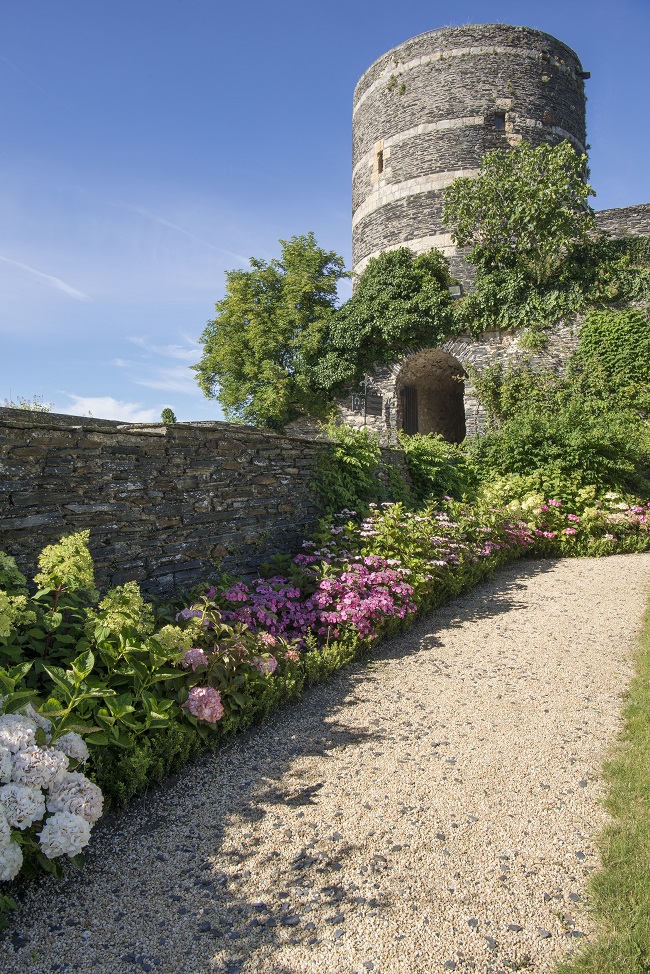
The garden in front of the René gallery © Jean-Pierre Delagarde / Centre des monuments nationaux
Transformation and restoration
The castle was taken several times by the Huguenots during the 16th-century Wars of Religion and Henri III, King of France, threatened to destroy it. It was finally renovated and drastically modified to give it its final appearance that we know today.
As with many castles during and after the Revolution, the Château d’Angers was used as barracks or a prison. Some of the walls bear messages and marks left by the unfortunate and unwilling inhabitants of the cells.
Listed as a historical monument in 1875 it was then severely damaged by both world wars, particularly by the Allied bombings in 1944. After an extensive restoration, the castle opened to the public in 1948 but it took another 6 years for the Apocalypse tapestry to return to its rightful home, albeit a revamped, contemporary gallery, to better preserve it and present it to the public.
Today, its gardens are particularly loved by visitors and the people of Angers alike who come to enjoy a beautiful green space in the heart of the city.
An exceptional treasure: the monumental Apocalypse tapestry
The castle also houses marvellous examples of art and tapestry and holds temporary exhibitions throughout the year. Since May 2023, the precious Apocalypse Tapestry is listed as a part of the Memory of the World Register by UNESCO. The register lists documents of universal interest, whether graphic, sound, audiovisual, multimedia or textile. The objective of this UNESCO program is to safeguard collections of heritage value for all of humanity and to ensure that they are preserved in the best possible conditions.
Created in the 1380s for Duke Louis I of Anjou, son of King Jean le Bon, the Apocalypse tapestry is the largest and oldest historical tapestry in the world: 67 scenes take place over 104 meters of length. About 500 m² remain of its original 840 m².
It depicts the Apocalypse of Saint John, the last book of the Bible, and interprets the story by anchoring it deeply in the 14th century.
A jewel of Western medieval art, this tapestry made of wool, with a very fine weave, served as a giant woven manuscript and was presumably intended to be exhibited at major public ceremonies. It pioneered a new kind of medium used to assert the political ambitions of a prince, brother of the King of France Charles V.
Lead photo credit : The Porte des Champs of the Angers castle © Romain Veillon / Centre des monuments nationaux
Share to: Facebook Twitter LinkedIn Email
More in Angers, Anjou, Château, French history, loire valley, Monument Historique, monument of the month
Leave a reply
Your email address will not be published. Required fields are marked *



